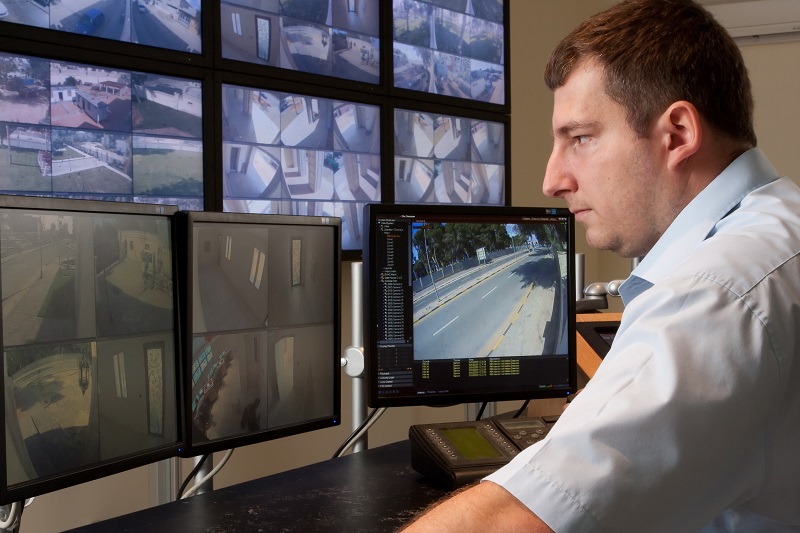The Ultimate Guide to Fiber Optic Security Systems for Your Business
In an age where security worries are paramount for services, understanding the ins and outs of fiber optic modern technology can be transformative. This overview describes how integrating fiber optic safety and security systems not just enhances data defense yet additionally supplies advantages like resistance to interference and real-time surveillance capacities. As organizations examine their safety and security needs, it ends up being crucial to take into consideration the installment procedure and the most current developments in the field. What specific variables should be prioritized when picking the ideal system, and exactly how can companies guarantee they make one of the most enlightened choices?
Recognizing Fiber Optic Modern Technology

The core of a fiber optic cord consists of a slim glass or plastic center, surrounded by a cladding layer that mirrors light back right into the core. Single-mode fibers are created for long-distance transmission, while multi-mode fibers are suitable for shorter ranges, usually used within structures.
Fiber optics are not just quicker but additionally a lot more safe than typical circuitry. Their inherent resistance to electromagnetic interference and the difficulty of taking advantage of the signal without discovery make them a favored selection for organizations focusing on data integrity and security. As organizations increasingly count on safe and secure and reliable interaction systems, recognizing fiber optic innovation becomes essential for notified decision-making.
Secret Benefits of Fiber Optic Safety
When taking into consideration safety and security alternatives for a company, the advantages of fiber optic systems are particularly compelling. Firstly, fiber optic technology uses extraordinary data transmission speeds and data transfer ability, making it suitable for handling high-resolution video clip feeds from surveillance cams. This capacity makes sure that safety and security personnel obtain real-time data, improving general response times to possible security threats.
Additionally, fiber optic cords are naturally resistant to electro-magnetic disturbance, which can compromise the honesty of conventional copper-based systems. This resistance makes sure that the information transmitted remains safe and nonstop, providing a much more trusted safety and security facilities. In addition, optical fiber are much less susceptible to physical damages, as they are made from glass instead of metal, minimizing upkeep costs and downtime.
One more substantial advantage is the raised scalability of fiber optic systems. As organization demands advance, fiber networks can be quickly expanded to suit additional security gadgets without significant overhauls to the existing infrastructure. Fiber optic systems provide enhanced cybersecurity attributes, including encryption capacities that secure delicate data from unapproved access. Collectively, these advantages make fiber optic safety and security systems a robust choice for companies seeking to improve their safety actions.
Installation Refine and Considerations
Taking into consideration the intricacies included, the installation procedure of fiber optic security systems needs cautious preparation and execution. The preliminary action involves a thorough site evaluation to recognize optimal areas for cabling and devices. This assessment should consider environmental elements, existing facilities, and possible vulnerabilities.

Furthermore, the setup needs to follow local building ordinance and market standards. This might consist of collaborating with different stakeholders such as structure managers, IT get redirected here groups, and safety and security employees to make sure seamless combination with existing systems.
Post-installation, rigorous screening is required to verify system performance and determine any problems that may occur. By focusing on these factors to consider throughout the installment process, companies can make sure a useful source robust and effective fiber optic security system that satisfies their details safety and security requirements.
Most Recent Technologies in Fiber Optic Safety
Current innovations in fiber optic technology have actually considerably enhanced the abilities of protection systems for businesses. Among one of the most noteworthy technologies is the integration of fiber optic sensing units that can spot vibrations and invasions along the perimeter of a facility. These sensors supply real-time monitoring, enabling fast action to possible violations.
Additionally, the development of dispersed fiber optic noticing innovation permits the continual surveillance of huge locations with a solitary fiber cable television. This approach not just lowers installment expenses however additionally improves the dependability of keeping an eye on systems by eliminating the demand for several, different sensing units.
Moreover, innovations in multiplexing methods have actually enabled companies to transmit huge quantities of data over fiber optic networks, enhancing the capacities of video clip monitoring systems. High-definition video feeds can now be sent out over cross countries without loss of high quality, guaranteeing that safety workers have access to clear and actionable details.
Lastly, the use of expert system (AI) together with fiber optic systems is transforming hazard discovery. AI algorithms can examine data from fiber optic networks to identify uncommon patterns or actions, enabling for proactive safety measures. These advancements jointly represent a substantial leap forward in fiber optic safety and security modern technology.
Choosing the Right System for Your Business
Selecting the ideal fiber optic security system for your company is vital for making sure go optimal defense and satisfaction. To make an educated choice, analyze your particular safety needs, thinking about variables such as the dimension of your facilities, the nature of your operations, and prospective vulnerabilities.
Begin by evaluating the degree of security required; for example, high-risk atmospheres might necessitate sophisticated systems with integrated monitoring and invasion discovery capacities. Next off, think about scalability; as your organization grows, your safety system should can increasing to accommodate raised demands without considerable overhauls.
In addition, examine the reliability and performance of different systems. Seek service providers with well established credibilities and client testimonies that vouch for their service top quality. It's also a good idea to ask about the modern technology's compatibility with existing facilities, making sure a smooth combination procedure.
Verdict
In verdict, fiber optic protection systems present a durable option for boosting organization safety frameworks. The latest developments even more bolster the efficiency of these systems, making certain that companies remain secure and adaptable in an ever-evolving danger landscape.